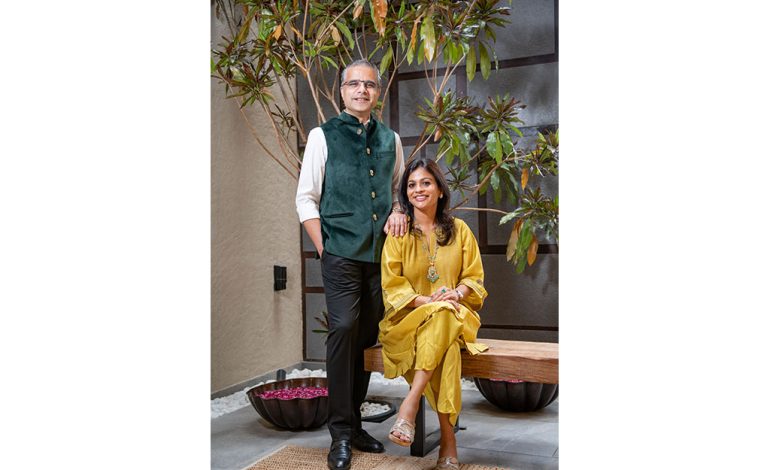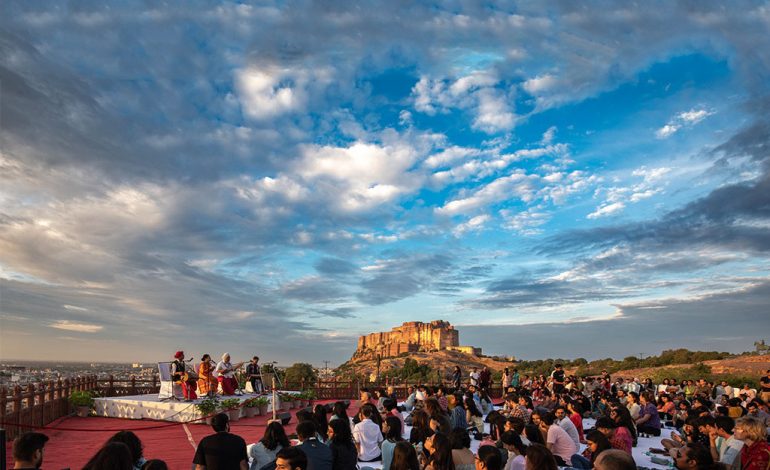
Khamma Ghani Jodhpur
The curtains have been brought down on the 13th edition of Jodhpur RIFF 2022, a five-day music festival that enthralled music lovers with a spectacular line-up of high-quality performances by Indian and global musicians. MARWAR reports.

Under the brightest full moon of Sharad Purnima, Mehrangarh Fort was a picture of magnificence, as it played host to Jodhpur RIFF (Rajasthan International Folk Festival) with excitement in the air. India’s favourite music festival stayed true to its spirit, with over 250 performers showcasing Rajasthani, Indian and global ethnic folk music. Jodhpur RIFF, India’s custodians of roots, pushed the envelope further this year with exciting acts, new genres and unique collaborations. “Folk music is the music of the people, across generations. The festival plays a key role in building a focal point for and nurturing this part of the country’s vibrant ecosystem of cultural heritage by providing opportunities, inspiration and livelihood for traditional Rajasthani artistes,” advocates HH Maharaja Gajsingh II of Marwar-Jodhpur, Chief Patron of the festival.
An indispensable haven for artistes, RIFF fostered the immense talent of folk singers from Rajasthan and other parts of India, and celebrated roots music from all over the globe. Presenting the highlights from the folk festival.
A mélange of music
Held over a period of five days in October, the festival kicked off with the wholesome energy of Children’s Folk Morning within the beautiful environs of Veer Durga Das Memorial Park witnessing traditional art forms such as Kathputli, Ghoomar, Kachchi Ghodi, Teraah Tali and the crowd favourite, Rajasthani Circus.
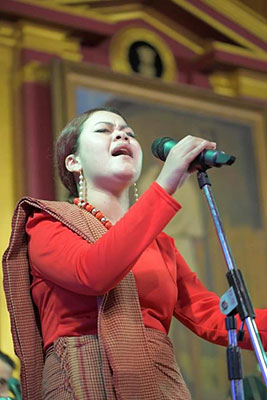
Young singer-songwriter Emlyn from Mauritius brought the house down in the City Concert with her infectious beats of sega. The music of slaves from the island brought immediacy to the sounds of the past through traditional instruments like ravanne and kalimba. The ‘Dawn Concert’ held next to Jaswant Thada, a glorious cenotaph built in the memory of Maharaja Jaswant Singh II, comprised meditative hymns of Meghwal singers against the backdrop of a rising sun. The show-stopping performances by all-female vocalists Sumitra Devi, Mohini Devi, Ganga-Sunder and Suraiyaji, overcame patriarchal prejudices. Brazilian producer and instrumentalist Mauricio Caruso, with his enchanting guitar set, brought folk tunes from Galicia and popular melodies from his homeland. As Gareth Bonnello, AKA the Gentle Good, presented his unique brand of music inspired by Welsh folklore, the audience stood captivated. Emlyn’s voice was full of passion and soul, and her percussionist taking to the tabla was a big hit. The award-winning band ARIFA enthralled the listeners with its layered music, as its multicultural set weaved diverse rhythms and styles into the performance. The day ended with ‘Desert Lounge’, as Langa artistes from Badnava narrated the emotional story of the star crossed lovers Dholu and Maru, and the legend of the hero Durgadas Rathore. The legends of the Langa community were accompanied by the Sindhi sarangi and alghoza.
A cultural delight
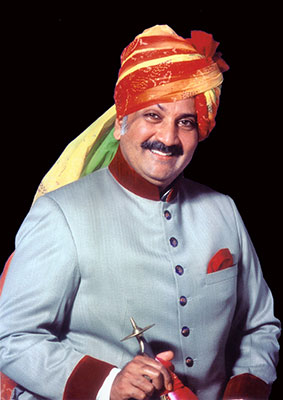
The early morning sunrays on day three were greeted by Khasi music that opened the door to an ancient musical tradition. Musicians Dr Meban Lyngdoh, Amabel Susngi, Risingbor Kurkalang and Banshailnag Mukhim, presented their striking melodies from the Khasi Hills. The festival then travelled to Mexico with stalwart of Mexican folk dance, Jaceil Neri taking participants through Mexican dance forms folklorico and jarabe. The corridors of Mehrangarh were filled with the colours and sounds of Rajasthani folk dance, as Chang Nritya, Teraah Taali, and Gair Nritya dancers drew the audience into their fold. With the sun setting over the Jodhpur skyline, Indie artistes Bawari Basanti and Harpreet put their own spin on the folk and classical traditions. The unmistakable mastery of Manganiyar vocalists dedicated to the legendary late Sakhar Khan Manganiyar, wove a tapestry of rich Manganiyar musical tradition. SAZ, represented the great Rajasthani musician community—Langas. Ingenious vocalist and sarangi player Asin Khan, vocalist and khartal player Zakir Khan and dholak player Sadiq Khan, rearranged traditional Rajasthani lyrics to contemporary music, and the listeners were taken through songs spanning a spectrum—from spirituality to romance. Another treat for festival-goers, Israeli singer-songwriter Riff Cohen performed a soulful all-acoustic set which treaded between Hebrew, French, and Arabic, and in the bargain bringing the audience to their feet. The stage act ‘Bombay Brass’ was a true crowd pleaser. It began with the playful ‘Chin Chin Choo,’ and ended with the audience singing back the short riffs played by frontman Rhys Sebastian and his group on the sax.
Reviving forgotten music
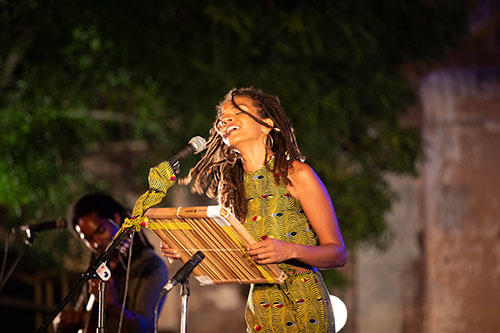
Jasleen Kaur Monga heralded the dawn of day four with chants and jaaps from the Guru Granth Sahib. As the first light of day appeared, she created a serene mood with her shabads, reet, and nirguni bhajans that are characteristic of the Sikh tradition.
The rigorous dance bootcamp with Kalbeliya dancer Asha Sapera introduced participants to the popular Rajasthani dance form, ghoomar. The stalwarts of the Manganiyar and Langa communities introduced Sufi tradition in Rajasthani music at the Chokelao Bagh. The special Moonrise Session at Jaswant Thada featuring a duet from Ustad Dilshad Khan, a North Indian classical sarangi player, and accomplished flautist Pandit Pravin Godkandi, ensured an evening to remember. The Irish-Rajasthani collaboration, ‘Citadels of the Sun’ was a beautiful interaction of the fiddle and the uilleann pipes, with the sarangi and dholak by musicians from Donegal, Ireland and Rajasthan. The main stage act ended with a qawwali by Warsi Brothers—legatees of Amir Khusro—as the qawwals wove music from different parts of India. The festival came to a befitting end with Prahlad Tipanya singing Kabir bhajans in the Malwi style. All in all, it created a wide audience for the rich folk scene of Rajasthan, and at the same time fostered the unique sounds and collaborations in roots music—both within the subcontinent and at the global level.

